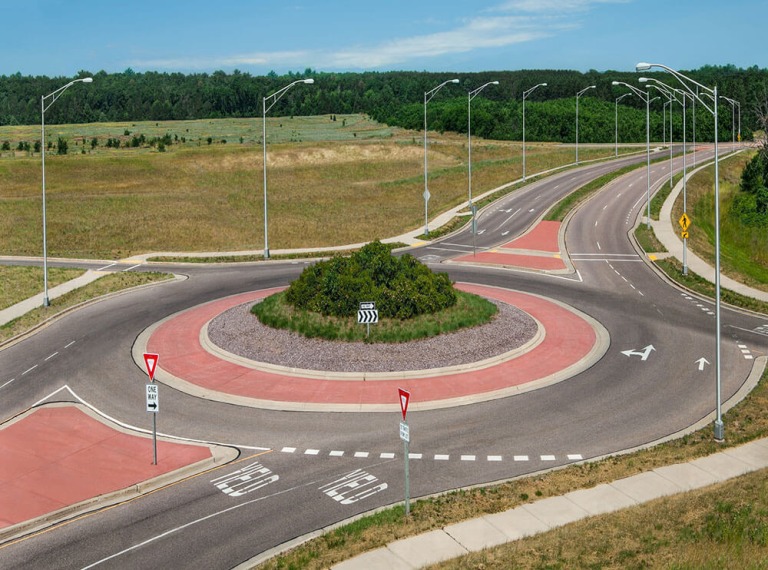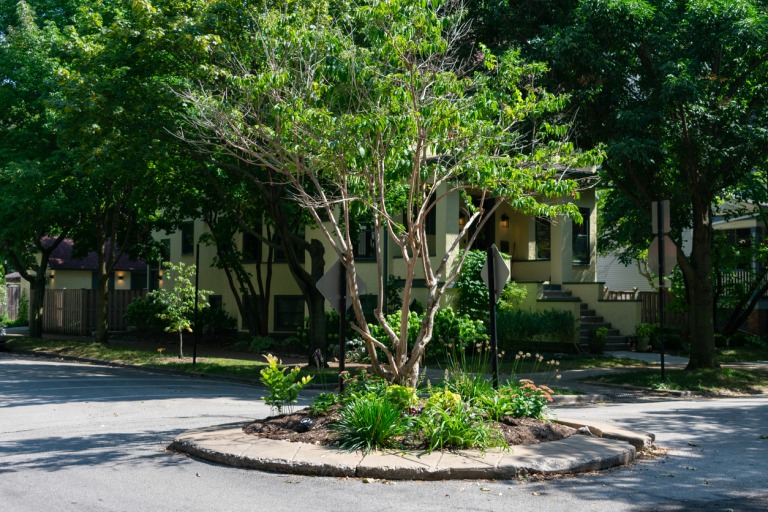
Roundabouts, Traffic Circles, and Rotaries: Navigating the Differences
In the world of roadways and intersections, the terms "roundabout," "traffic circle," and "rotary" are often used interchangeably. However, while they might seem similar at first glance, each has distinct characteristics and purposes. Understanding these differences is crucial for both road safety and efficient traffic flow. Let's delve into the nuances of these circular intersections.

Roundabouts
A roundabout is a circular intersection designed with specific safety features:
- Yield Control: Vehicles entering a roundabout must always yield to traffic already circulating within the roundabout.
- Islands on Approaches: These are typically landscaped areas that guide traffic and enhance safety.
- Speed Reduction: The design of a roundabout, including its central island and traffic separator islands, naturally reduces vehicle speeds, making it safer for both motorists and pedestrians.

Traffic Circles
Traffic circles are often confused with roundabouts, but they
serve a different purpose. They are typically found in neighborhood settings and are designed primarily for calming traffic. Their size is generally smaller than that of roundabouts and rotaries. Unlike roundabouts, traffic circles might not always have clear yield or entry protocols, and their primary function is to slow down traffic in residential areas rather than facilitate large volumes of traffic.

Rotaries
Rotaries, on the other hand, are larger circular intersections characterized by:
- Higher Speeds: Unlike roundabouts, rotaries are designed with wide, sweeping lanes that allow vehicles to maintain higher speeds.
- Ambiguous Yield Protocols: While roundabouts consistently require entering traffic to yield, not all rotaries have such clear yield signs at every entrance.
- Lane Dynamics: Most rotaries do not have clearly defined turn lanes or marked lanes within the circle. This lack of clarity means drivers might change lanes before their exit, which can lead to confusion and potential traffic conflicts.
Key Differences Between Roundabouts and Rotaries
- Speed: Roundabouts are designed with slow vehicle speeds in mind. Their design elements, such as the central island and traffic separator islands, naturally make drivers slow down. In contrast, rotaries, with their wide lanes, allow for much higher speeds.
- Yield Protocols: Roundabouts always prioritize vehicles already in the intersection, requiring entering traffic to yield. This is not always the case with rotaries.
- Lane Dynamics: In multi-lane roundabouts, drivers must choose their lane before entering the intersection, and no lane changes are allowed once inside. Rotaries, lacking clear lane demarcations, often see drivers changing lanes before exiting.
While roundabouts, traffic circles, and rotaries all serve the purpose of managing traffic at intersections, their design, size, and rules vary significantly. As urban planning and road safety continue to evolve, it's essential for drivers to understand these differences, ensuring smoother, safer journeys for all. The differences between modern roundabouts and old traffic circles, it's clear that while all these circular intersections have their place in traffic management, roundabouts, with their emphasis on safety and efficiency, are becoming the preferred choice in many regions.
